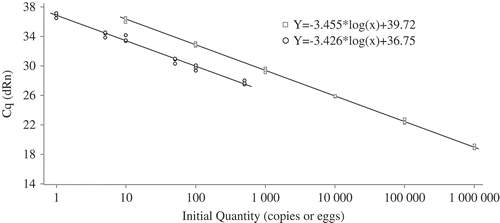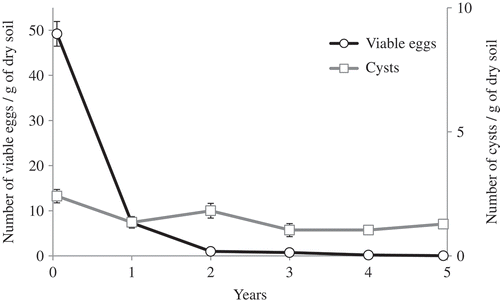Figures & data
Fig. 1 Standard curves for the amplification of the gpd1 gene on synthetic complementary DNA (squares) or on RNA extracted from viable eggs of Globodera rostochiensis (circles). Three independent replicates were carried out for each concentration.

Table 1. Effect of different treatments and different numbers of eggs of three Globodera species on the quantification cycle (Cq) of gpd1 messenger RNA by qRT-PCR.
Table 2. Estimation, by visual evaluation and qRT-PCR, of Globodera rostochiensis egg viability from 50 cysts that developed on the susceptible potato cultivar ‘Snowden’ in microplots.
Fig. 2 Evaluation of Globodera rostochiensis population density (cysts and viable eggs) after five continuous years of cropping with resistant potatoes (cv. Andover) in microplots located in Saint-Amable, Quebec, Canada.

Table 3. Evaluation of Globodera rostochiensis population densities (cysts and viable eggs) 10 years after the establishment of quarantine procedures (including two crops of resistant potatoes) in 24 fields located in Saint-Amable, Quebec, Canada.
